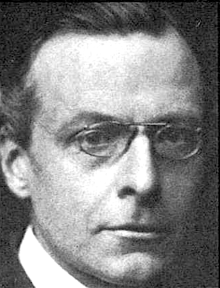
Courtenay Melville Crickmer [also known as C.M. Crickmer] was born in St. Pancras, London on 10 February 1879. He was articled to Alfred Aitchison (c.1846-1914) in 1897 and remained as his assistant. He also attended classes at the Architectural Association and at the Royal Academy Schools in London. He was employed as an assistant to Horace Cheston (1850-1919) and Joseph Craddock Perkin (1862?-1942) of Cheston & Craddock Perkin; to Ambrose MacDonald Poynter (1867-1923), and in H.M. Office of Works.
Crickmer commenced independent practice as an architect in London in 1904. In 1907 and moved to Letchworth in Hertfordshire where he lived for the rest of his life. By 1907 he had already designed some properties in Letchworth. Soon after his moved Letchworth he became acquainted with Raymond Unwinm and at his behest subsequently designed a number of houses in Hampstead Garden Suburb, beginning with 8 and 10 Temple Fortune Lane (1908-09). Crickmer became increasingly engaged on garden city and suburb projects and in 1919 he prepared plans for Welwyn Garden Suburb and in the 1920s designed houses for the new development.
In 1920 Crickmer formed a partnership with Allen Foxley (1869-1955) and over the next two decades either together or separately they designed several houses for Letchworth Garden City and Hampstead Garden Suburb.
Following World War Two Crickmer formed The Associated Architects, and architectural group comprising Leonard Brown, Robert Hall, John Tickle and himself. Between 1948 and 1953 they were involved in the layout of the new Grange Estate layout at Letchworth planned by Geoffrey Alan Jellicoe (1900-1996). His last architectural work was the design of Grange Baptist Church at Letchworth, in association with W. Knott, in 1963-64
Crickmer was elected a Licentiate of the Royal Institute of British Architects (LRIBA) in 1911 he a Fellow of the Royal Institute of British Architects (FRIBA) in 1912.
The address office was given as 1 Lincoln's Inn Fields, London from 1904 to 1939. He died in Hitchin, Hertfordshire on 24 January 1971
Co-partnership Tenants' houses at Hampstead Garden Suburb; Garden Suburb Development Co., houses at Hampstead; Howard Cottage Society, cottages at Letchworth; Building Company for Town Planning Estates, houses at Letchworth, etc., National Cottage Society, cottages at Letchworth; Herts County Council, cottages; Garden Villages, Ltd., cottages near Oxford; New Eltham Tenants' Housing; East Grinstead Tenants' Housing Scheme; Ruislip Housing; various private houses in different parts of the country; church, club, halls, etc., at Letchworth. Housing schemes for the following Councils: Hatfield R.D.C., Letchworth U.D.C., East Barnet Valley U.D.C., Dartford U.D.C., Woodford U.D.C., and Epsom U.D.C. Lay-out schemes for estates in various places; houses, Welwyn Garden City; girls' boarding school, Farringtons, Chislehurst. [Source: Who's Who in Architecture 1926]
______
See also Historic England [link below]
Directory of British Architects 1834-1914. Compiled by Antonia Brodie, et al. Volume 1: A-K. London; New York: British Architectural Library, Royal Institute of British Architects/Continuum, 2001
Gray, A. Stuart. Edwardian architecture: a biographical dictionary. London: Gerald Duckworth & Co., Ltd., 1985
Marriott, Charles. Modern English Architecture. London: Chapman & Hall Ltd., 1924
‘Obituary’. Building vol. 220, 5 February 1971 pp. 6, 46
‘Obituary’. Town & Country Planning vol. 39, March 1971 p. 180
Who's Who in Architecture 1926. Edited by Frederick Chatterton. London: Archiyectural Press, 1926